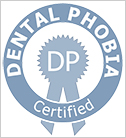At Ridgway dental our orthodontists help children achieve straight smiles and overcome common problems like overcrowding, increase over bites and over jets (which can increase the risk of damage to teeth whilst playing sports), cross bites and spaces between teeth.

What happens if my child needs braces?
Your child’s general dentist will often suggest a free consultations for children with the orthodontist at the age of 10-12 if they notice any signs of the common orthodontic problems.
However if you are concerned about your child’s smile you can book a free consultation yourself at any time.
At the consultation our orthodontists may take pictures and X-rays in addition to their clinical examination and they will discuss with you any orthodontic treatment needed.
Children’s Braces Wimbledon - Frequently Asked Questions
No One-Size-Fits-All
Individual assessment
The ideal age to start orthodontic treatment with braces varies from child to child. An orthodontist evaluates each patient’s specific dental issues and development to determine the optimal time for intervention.
Early Intervention
Interceptive treatment
Some orthodontists recommend early interceptive treatment around ages 7-10 to address specific orthodontic issues, such as underbites, crossbites, or severe crowding. This early intervention can simplify or shorten future treatment.
Jaw and facial growth
Early treatment can also guide the growth of the jaw and facial bones while the child is still growing, potentially preventing or minimising more complex issues later.
Adolescent Treatment
Most common age
The most common age to get braces is between 10-14 years old. This is typically an ideal time because most permanent teeth have erupted, and the remaining baby teeth are ready to be replaced.
Full set of permanent teeth
Treating orthodontic issues during this stage, when the jaw and facial structures are still developing, allows the orthodontist to achieve the best results and align the teeth and jaws into their proper positions.
Adult Treatment
Never too late
While the optimal time for braces is during childhood or adolescence, adults can also benefit from orthodontic treatment. With advances in orthodontic techniques and materials, it’s never too late to straighten teeth and achieve a healthy, aligned bite.
Contact the dental practice to schedule a children’s orthodontics consultation and determine the best time for your child to begin teeth straightening treatment.
Orthodontic treatment is a highly individualised process, and the ideal age can vary based on the specific needs of each child. By consulting with an experienced orthodontist, parents can make an informed decision about the most suitable time to begin treatment and achieve a beautiful, healthy smile for their child.
Factors Affecting Cost
Treatment complexity
The cost of braces for children in the UK can vary greatly depending on the complexity of the orthodontic treatment required. More severe cases involving jaw alignment or bite correction tend to be more expensive.
Treatment duration
Longer treatment durations, which may be necessary for more complex cases, can increase the overall cost due to additional appointments and adjustments required.
Private vs. NHS Treatment
NHS braces
Children under 18 may be eligible for braces on the NHS if there is a clinical need and the treatment is approved. NHS braces are free but involve longer waiting times and limited options.
Private orthodontic treatment for children
Treatment with us starts at £4,000 the cost of which can be spread over time.
For an accurate quote based on your child’s specific needs, schedule a consultation with our orthodontist.
While braces can be a significant investment, the long-term benefits of a properly aligned bite and confident smile make it a worthwhile consideration for many families. Exploring various financing options and discussing costs upfront can help make orthodontic treatment more accessible.
Traditional Metal Braces
Stainless steel brackets
These are the most common and cost-effective option, consisting of metal brackets attached to each tooth and connected by a wire.
Coloured elastics
Many children enjoy customising their braces with coloured elastics, making the treatment experience more fun and personalised.
Ceramic Braces
Less noticeable option
Made of clear or tooth-coloured materials, ceramic braces are less visible than metal braces but function similarly.
Ideal for image-conscious children
These can be a good choice for older children or teenagers who may be more self-conscious about their appearance during treatment.
Lingual Braces
Hidden behind teeth
These braces are attached to the back of the teeth, making them completely invisible from the front.
Custom-made for each patient
While effective, lingual braces can be more expensive and may not be suitable for all orthodontic cases.
Clear Aligners
Removable plastic trays
For older children and teenagers, clear aligner systems like Invisalign Teen can be an option for mild to moderate orthodontic issues.
Discover the best braces option for your child by scheduling a consultation with our experienced orthodontist.
The choice of braces depends on various factors, including the complexity of the case, your child’s preferences, and your budget. Our orthodontist can guide you through the options to find the most suitable treatment for your child’s needs.
Visible Alignment Issues
Crowded teeth
If your child’s teeth appear overlapped or twisted, this may indicate a need for orthodontic intervention.
Gaps between teeth
Noticeable spaces between teeth can also be a sign that braces might be beneficial.
Bite Problems
Overbite or underbite
If the upper or lower jaw noticeably protrudes, this could indicate a misaligned bite requiring correction.
Crossbite
When some upper teeth sit inside the lower teeth when biting down, this may suggest a need for orthodontic treatment.
Functional Issues
Difficulty chewing
If your child experiences trouble biting or chewing food properly, this could be due to misaligned teeth or jaws.
Speech problems
Certain speech difficulties, particularly problems pronouncing specific sounds, can sometimes be related to dental alignment issues.
Other Indicators
Thumb sucking
Prolonged thumb sucking beyond age 5 can lead to orthodontic problems.
Mouth breathing
Chronic mouth breathing can affect facial and dental development, potentially necessitating orthodontic intervention.
If you notice any of these signs, schedule a consultation with our orthodontist for a comprehensive evaluation of your child’s oral development.
Early detection of orthodontic issues can lead to more effective and potentially shorter treatment. Regular dental check-ups and orthodontic screenings from a young age can help identify and address problems early on.
Average Treatment Duration
18 to 24 months
Most children wear braces for an average of 18 to 24 months, but treatment times can vary significantly based on individual needs.
Factors affecting duration
The complexity of the case, the type of braces used, and the child’s compliance with treatment instructions all influence the overall treatment time.
Shorter Treatments
Minor corrections
Some children with mild alignment issues may only need braces for 6 to 12 months.
Longer Treatments
Complex cases
More severe orthodontic problems, such as significant overbites or underbites, may require treatment lasting up to 3 years or more.
Phased Treatment
Early intervention
Some children may undergo a two-phase treatment, with an initial phase in early childhood followed by a second phase in adolescence, potentially extending the overall treatment time.
For a personalised estimate of your child’s treatment duration, book a consultation with our orthodontic team.
Remember, each child’s orthodontic journey is unique, and regular check-ups throughout the treatment process allow for adjustments to ensure the best possible outcome in the most efficient timeframe.
Hard Foods
Potential for bracket damage
Hard foods like nuts, hard candies, and ice cubes can break or dislodge brackets and should be avoided.
Alternatives
Encourage softer alternatives or cut hard fruits and vegetables into smaller, more manageable pieces.
Sticky Foods
Risk of wire damage
Chewy or sticky foods like caramel, chewing gum, and toffee can bend wires or pull off brackets.
Difficult to clean
These foods can also get stuck in braces, making them challenging to clean and increasing the risk of tooth decay.
Sugary Foods and Drinks
Increased decay risk
While not strictly prohibited, sugary items should be limited as they can lead to tooth decay, especially around brackets where plaque can accumulate.
Crunchy Snacks
Potential for breakage
Crunchy snacks like popcorn, crisps, and hard pretzels can damage braces and should be consumed with caution.
Establish a Robust Oral Hygiene Routine
Regular brushing
Encourage your child to brush their teeth after every meal, using a soft-bristled toothbrush and fluoride toothpaste.
Flossing techniques
Teach your child how to use floss threaders or special orthodontic flossers to clean between teeth and under wires.
Provide Necessary Tools
Interdental brushes
These small brushes can help clean hard-to-reach areas around brackets and wires.
Water flossers
Consider investing in a water flosser for a more thorough clean between teeth and around braces.
Monitor Diet
Avoid problematic foods
Help your child avoid foods that can damage braces or get stuck in them, such as sticky candies, hard nuts, or popcorn.
Cut foods into smaller pieces
Encourage cutting larger, firmer foods into smaller, more manageable pieces to reduce strain on braces.
Regular Orthodontic Check-ups
Attend all appointments
Ensure your child attends all scheduled orthodontic appointments for adjustments and progress checks.
Assess the Situation
Identify the issue
Determine whether it’s a loose bracket, broken wire, or another problem.
Check for discomfort
Ensure your child isn’t experiencing pain or irritation from the damaged braces.
Temporary Solutions
Loose bracket
If a bracket is loose but still attached to the wire, leave it in place and cover it with orthodontic wax to prevent irritation.
Protruding wire
For a wire poking out, try using a clean pencil eraser to gently push it back into place. If unsuccessful, cover the end with orthodontic wax.
Contact Your Orthodontist
Prompt communication
Inform your orthodontist about the issue as soon as possible. They can advise on whether an immediate appointment is necessary.
Emergency appointments
Most orthodontic practices offer emergency appointments for urgent issues like severe pain or major appliance breakages.
Avoid DIY Repairs
Professional expertise required
Do not attempt to repair the braces yourself, as this could potentially cause further damage or affect the treatment progress.
If your child experiences any issues with their braces, contact our practice immediately for guidance and to schedule any necessary repairs.
Being prepared and knowing how to handle minor issues can help maintain your child’s comfort and ensure their orthodontic treatment stays on track. Always consult with your orthodontist for proper care and repairs.
Participation in Sports
Continued engagement
Children with braces can and should continue participating in sports and physical activities.
Increased precautions
However, some additional care and protective measures are necessary to prevent damage to the braces and potential oral injuries.
Protective Gear
Mouthguards
A properly fitted orthodontic mouthguard is essential for children with braces who participate in contact sports or activities with a risk of facial impact.
Custom vs. over-the-counter
While over-the-counter mouthguards are available, a custom-made orthodontic mouthguard provides the best protection and comfort.
Non-Contact Sports
Lower risk activities
For non-contact sports, standard precautions and good oral hygiene practices are usually sufficient.
Post-Activity Care
Check for damage
After sports activities, encourage your child to check their braces for any signs of damage or loosened components.
Rinse and clean
Ensure thorough cleaning of teeth and braces after physical activities, especially if a mouthguard was worn.
Regular Adjustment Appointments
Typical frequency
Most children with braces need to visit the orthodontist every 4 to 8 weeks for adjustments and progress checks.
Customised schedule
The exact frequency may vary based on the individual treatment plan and the type of braces used.
Initial Treatment Phase
More frequent visits
In the beginning stages of treatment, appointments may be scheduled more frequently to ensure proper initial alignment and address any early issues.
Progress Monitoring
Assessing tooth movement
Regular visits allow the orthodontist to monitor the progress of tooth movement and make necessary adjustments to the treatment plan.
Addressing concerns
These appointments also provide opportunities to address any concerns or discomfort your child may be experiencing.
Treatment Duration Impact
Compliance importance
Attending all scheduled appointments is crucial for keeping the treatment on track and potentially reducing the overall treatment duration.


